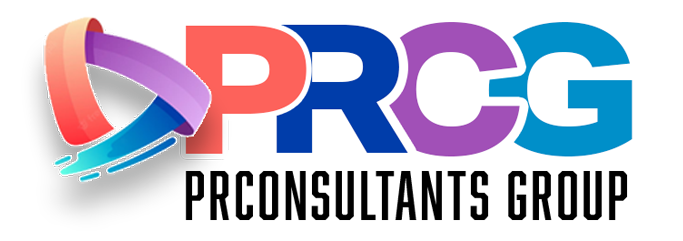Podcast guesting is more than a nice conversation. It is a focused way to earn links, citations and attention that show up in organic search and AI answers. When you prepare like a pro and give the host clean assets, your language lands in titles, show notes and transcripts. That is where discovery happens. Pair each interview with a simple landing page, an edited transcript and a short promotion plan. One appearance can fuel weeks of content and a steady stream of qualified visitors. Below are 14 Q&A that will help you prep, perform and turn each episode into measurable results.
How to be a good podcast guest?
Show up prepared, present and helpful. Know the audience, the host’s style and the show’s recent topics. Bring one sharp angle, one story and one resource that matches the theme. Answer the question asked, not the one you wish was asked. Speak in tight, complete thoughts so editors can pull clean clips. Avoid jargon. Share one stat with a source. Mention the URL once early and once near the end. Respect time. Wear headphones. Use a decent mic. Close with gratitude and a clear next step for listeners. Then follow through on promotion. Hosts remember guests who make their job easy and bring value to their audience.
How to prepare for a podcast interview as a guest?
Listen to two recent episodes. Note the pacing, question patterns and segment transitions. Draft three talking points, three example stories and three quotable lines under 120 characters. Write your short bio in 40 words and 90 words. Confirm the episode title options, links and preferred anchor text. Test your mic, camera and lighting. Silence notifications. Place a glass of water nearby. Keep a one-page cheat sheet with your framework, stat with source and the short URL you will say on air. Share your media kit with the host 48 hours ahead. Show up five minutes early. Take a breath. Smile. Think conversation, not monologue.
Do I have to travel for my guest podcast?
Almost never. Most guest interviews happen remotely over Riverside, SquadCast or Zoom. You need a quiet room, a USB mic, closed-back headphones and stable internet. If a show records in studio and invites you in person, weigh the upside. Studio quality can be higher and the relationship building is real. If travel is not practical, ask for a remote slot. Offer to ship your headshot and B-roll photo to support promotion. The goal is a clear recording and a useful conversation. You do not need a plane ticket to deliver that.
Are podcasts videotaped?
Many are. Audio-only is still common, but more shows capture video for YouTube and clips. Assume cameras are on unless told otherwise. Frame your shot at eye level. Use natural light or a simple ring light. Neutral background. No noisy patterns. Wear solid colors. Avoid clacking jewelry. Look at the camera when you deliver your key line. Ask the host if they plan vertical clips so you can center yourself in frame. Video gives you more assets to repurpose. Treat it like a bonus, not an obstacle.
How can I use my podcast appearance in other content?
Think building blocks. Post the edited transcript on your site with H2s and internal links. Write a recap blog with the three takeaways and two links to commercial pages. Cut a 30 to 60 second clip and a carousel for social. Add the episode to your Media Room with a short description and the show logo. Pull one quote into your About page or a sales deck. Drop the link in onboarding emails and nurture sequences. Pitch a related reporter with a data angle you discussed. Schedule reshares at 30, 60 and 90 days. One interview can fuel weeks of content if you plan it.
Does Google index podcasts?
Yes, through the pages around them. Google crawls show notes, transcripts and episode pages. It also sees your site if you publish an edited transcript and a recap. Make those pages clean and structured. Use descriptive titles, H2s that match real questions and links to a resource and a proof page. If the show publishes on YouTube, that video can rank for queries too. The audio itself is not the hero. The surrounding text is. Give Google and AI systems clear language, consistent names and fast pages. That is how your episode gets found after release week.
How can I make my story memorable?
Anchor it to a moment. A date, a client scene, a number that snaps attention. Use a simple framework to organize the lesson. Problem, choice, outcome. Keep details concrete. One quote from a customer beats five adjectives. Name the tension and how you resolved it. Share one mistake you will not repeat. End with a practical step listeners can take today. Then deliver your short URL that ties directly to the story. People remember specifics, not slogans. Give them a reason to retell your story in one sentence.
What is a podcast tour?
A podcast tour is a focused run of guest appearances across several shows in a set window, all tied to one message or launch. Think six to 12 interviews over six to eight weeks. You bring one angle, one resource and a promotion plan that repeats. The value is momentum. Repetition helps your message stick. Links and mentions stack. Search and AI panels see consistent language. Plan the tour like a mini campaign with targets, assets, a landing page and KPIs. It is not spraying and praying. It is a tight sequence with purpose.
How do I prepare the podcast host?
Send a tidy media kit 48 hours before recording. Include a 40 and 90 word bio, correct name and title with pronunciation, three title options under 60 characters, five show note bullets, one sourced stat, your three-step framework, headshot, horizontal image and two links with preferred anchor text. Add your short URL, social handles and promotion commitments. Confirm tech, date, time zone and release timing. Share any topics to avoid and a landmine list if needed. Ask if they want sample questions or timestamps. The easier you make it to copy and paste, the more your language lands on the page where it can be found.
Can you promote your podcast guest appearance?
Please do. Promotion helps the host and helps you. Day 0, post on LinkedIn and X with a quote from the host and tag the show. Day 2, share a 30 second clip with captions. Day 7, publish the recap blog and link it in comments. Add the episode to your Media page. Email your list with three takeaways and one CTA. Share the short URL in sales follow ups. If budget allows, put a small paid boost behind the best clip to your warm audience. Promotion is part of being a good guest. Say yes to it.
Should I leave a review after my podcast appearance?
If the show asks, yes. Keep it honest and short. Thank the host by name, note one specific thing you enjoyed and mention the audience you think will benefit. Do not pitch your product in the review. Share the episode link in your channels and tag the show. A thoughtful review, a social post and timely promotion build goodwill. Goodwill turns into future invites and referrals. In podcasting, relationships travel farther than hype.
How can a podcast help with my SEO?
Podcasts help when you treat each appearance like a content asset. Show notes on reputable sites link back to your pages, which can lift rankings. Publish an edited transcript on your site with clear H2s that match real questions. Add a short summary, one sourced stat and links to a resource page and a proof page. Create a focused landing page for listeners with one primary CTA and a brief FAQ. Interlink the transcript and recap blog to your services and case studies. Make pages fast on mobile and easy to scan. Schedule a few reshares over 30, 60 and 90 days. The result is simple. More quality links, more crawlable text and a steady stream of visitors who already care.
Will my podcast interview show up on AI search results?
It can, if the surrounding signals are clean. AI systems cite pages with clear entities, consistent names and readable structure. Ask the host to include your preferred name, title and links in the show notes. On your site, post a transcript with headings tied to real queries, plus a short summary. Keep product names and phrasing consistent across bios, notes and the landing page. If there is video on YouTube, add a solid description with the same language. These steps help models understand who you are and what you said. You will not control when you are cited, but you can raise the odds by making your content easy to parse and easy to trust.
What equipment do I need to be a podcast guest?
Here’s the simple kit that works:
USB mic like Audio-Technica ATR2100x or Samson Q2U
Closed-back headphones to prevent echo
Stable internet ideally wired or sit close to the router
Quiet room with soft surfaces to cut echo
Webcam and light if video, eye-level camera and a small ring light
Quick setup tips:
Put the mic four to six inches from your mouth, use a pop filter if you have one
Turn off notifications and HVAC noise
Keep water nearby and notes at eye level
Share your short URL and bio with the host before you join
Clean audio, steady internet and a calm room beat fancy gear every time.
Make the momentum last
Treat every guest spot like a mini launch. Pick the right rooms, bring one clear angle and make it easy for the host to showcase your story. Publish fast, link smart and promote on a simple cadence. Do this on repeat and you build authority that shows up in blue links and AI summaries. If you want a plan that turns interviews into measurable results, TrizCom PR can help.
Everyone has a story. Let TrizCom PR tell yours!
About the Author:
Jo Trizila – Founder & CEO of TrizCom PR
Jo Trizila is the founder and CEO of TrizCom PR, a leading Dallas-based public relations firm known for delivering strategic communications that drive business growth and enhance brand reputations as well as Pitch PR, a press release distribution agency. With over 25 years of experience in PR and marketing, Jo has helped countless organizations navigate complex communication challenges, ranging from crisis management to brand storytelling. Under her leadership, TrizCom PR has earned recognition for its results-driven approach, combining traditional and integrated digital strategies to deliver impactful, measurable outcomes for clients across various industries, including healthcare, technology and nonprofit sectors. Jo is passionate about helping businesses amplify their voices and connect with audiences meaningfully. Her hands-on approach and commitment to excellence have established TrizCom PR as a trusted partner for companies seeking to elevate their brand and achieve lasting success. Contact Jo at jo@TrizCom.com.



































